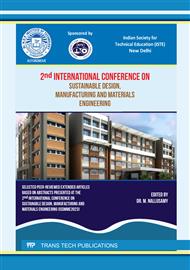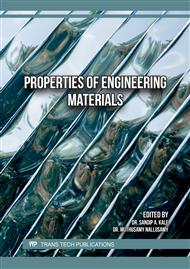p.77
p.85
p.97
p.103
p.117
p.127
p.137
p.145
p.155
Effect of Quarry Dust on the Fresh Concrete Properties of Self Compacting Concrete
Abstract:
Self-compacting concrete (SCC) is a concrete which flows under its own weight in the congested areas without any external force. Increase in demand and decrease in availability of fine aggregates, we use an alternative material called quarry dust, it is a finer material generated from stone quarries. This paper deals with the feasibility study on the utilization of quarry dust as a partial replacement in fine aggregate. In this experimental investigation, the properties of materials are tested as per Indian standards. The filling ability, passing ability and flowability characteristics of SCC as a partial replacement of fine aggregate with quarry dust was investigated as per EFNARC guidelines. In this experimental investigation, different mixes were prepared as a partial replacement of fine aggregate with quarry dust at various percentages such as 10%, 20%, 30%, 40% and 50% to obtain the optimum replacement level. The Slump flow, U-box, L-Box, V-Funnel and J-ring tests were carried out to determine the workability of SCC. The finding shows that the workability decreases with the addition of quarry dust. It is concluded that addition of quarry dust reduces the fresh properties of the SCC.
Info:
Periodical:
Pages:
137-143
Citation:
Online since:
April 2024
Authors:
Price:
Сopyright:
© 2024 Trans Tech Publications Ltd. All Rights Reserved
Share:
Citation:



